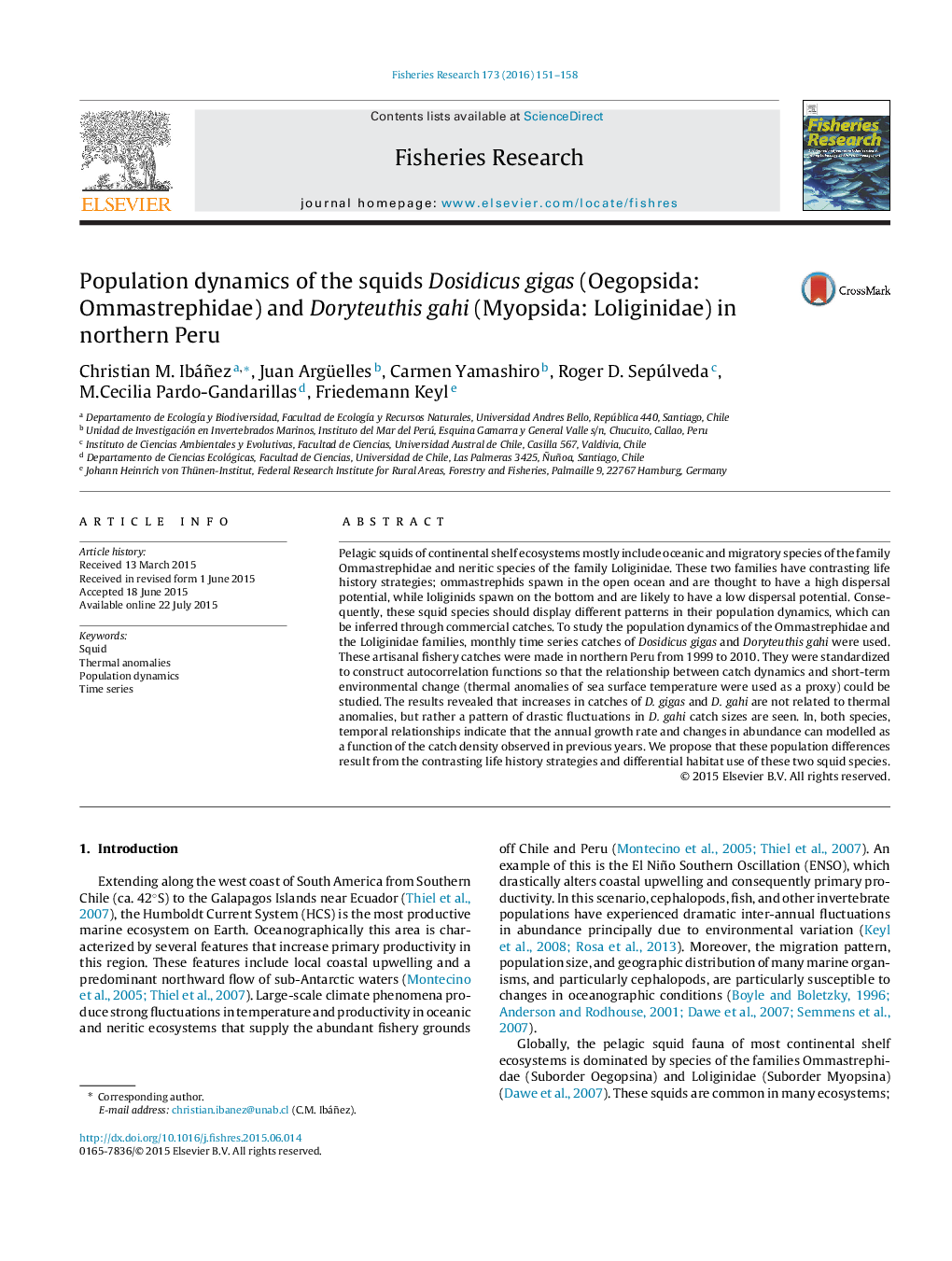| کد مقاله | کد نشریه | سال انتشار | مقاله انگلیسی | نسخه تمام متن |
|---|---|---|---|---|
| 4542740 | 1327096 | 2016 | 8 صفحه PDF | دانلود رایگان |

• Time series of D. gigas and D. gahi catches are not related to thermal anomalies.
• Time series of D. gigas and D. gahi catches show that the changes in abundance are related to first order dynamics. This suggests that denso-dependent processes affect populations of these squids. This can be modeled as a function of density observed in previous years.
• Population dynamics of squids are related to their life-history strategies.
Pelagic squids of continental shelf ecosystems mostly include oceanic and migratory species of the family Ommastrephidae and neritic species of the family Loliginidae. These two families have contrasting life history strategies; ommastrephids spawn in the open ocean and are thought to have a high dispersal potential, while loliginids spawn on the bottom and are likely to have a low dispersal potential. Consequently, these squid species should display different patterns in their population dynamics, which can be inferred through commercial catches. To study the population dynamics of the Ommastrephidae and the Loliginidae families, monthly time series catches of Dosidicus gigas and Doryteuthis gahi were used. These artisanal fishery catches were made in northern Peru from 1999 to 2010. They were standardized to construct autocorrelation functions so that the relationship between catch dynamics and short-term environmental change (thermal anomalies of sea surface temperature were used as a proxy) could be studied. The results revealed that increases in catches of D. gigas and D. gahi are not related to thermal anomalies, but rather a pattern of drastic fluctuations in D. gahi catch sizes are seen. In, both species, temporal relationships indicate that the annual growth rate and changes in abundance can modelled as a function of the catch density observed in previous years. We propose that these population differences result from the contrasting life history strategies and differential habitat use of these two squid species.
Figure optionsDownload as PowerPoint slide
Journal: Fisheries Research - Volume 173, Part 2, January 2016, Pages 151–158